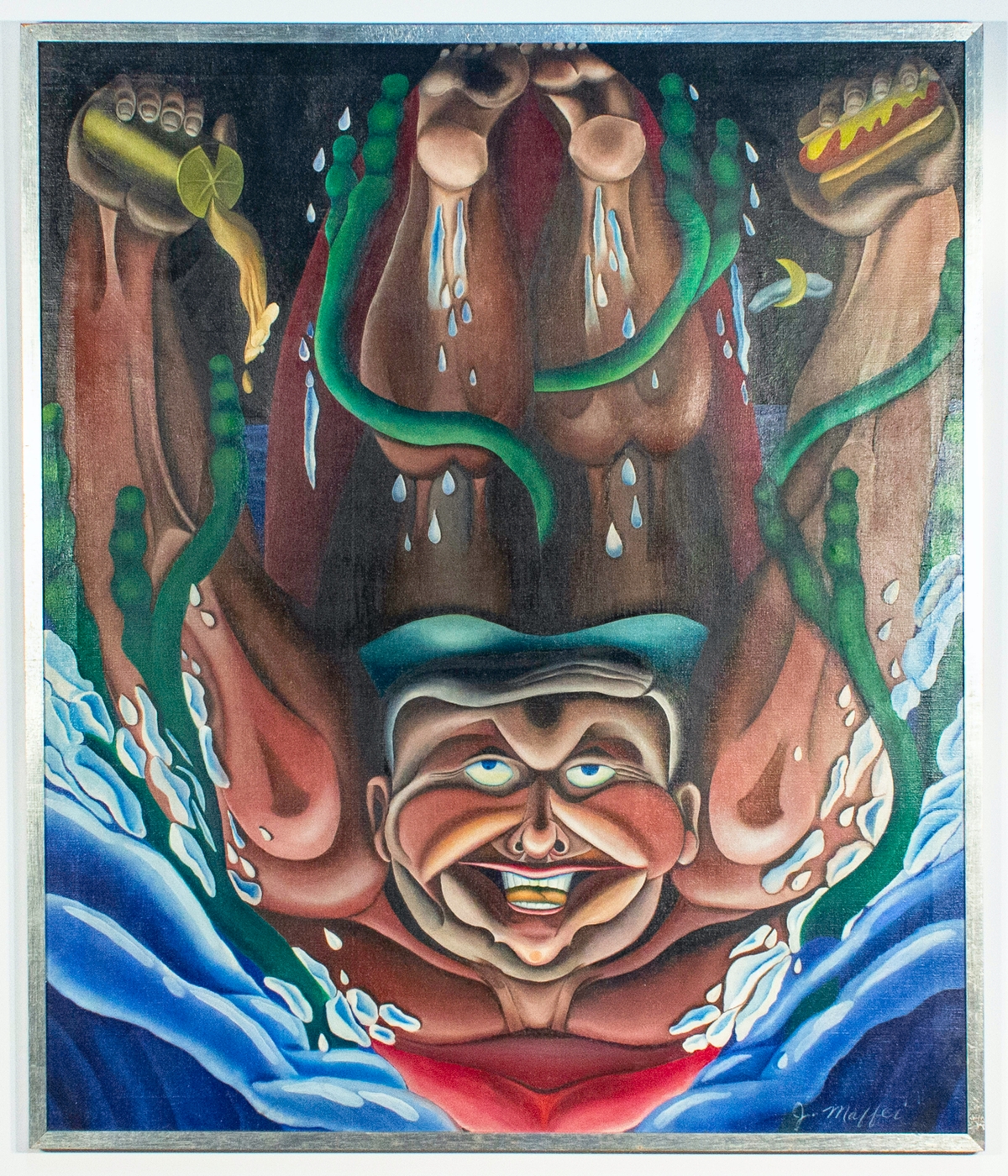LA
L.A.’s Uncool School
by | Jan 15, 2024 1:23 pm
Post a Comment | E-mail the Author
Posted to: Visual Art

Joan Maffei, Don The Surfer, 1966, oil on canvas, collection of George Wanlass, Los Angeles
THE ADVANCE OF THE REAR GUARD: CEEJE GALLERY IN THE 1960S
ArtCenter College of Design
Through March 9, 2024
Los Angeles’s art history is seemingly as infinite as the city itself. In The Advance of the Rear Guard: Ceeje Gallery in the 1960s, curator Michael Duncan reintroduces us to a group of artists who dispel conceptions of there ever having been a singular, all-encompassing “L.A. style.”
Founded in 1962 by gay partners Cecil Hedrick and Jerry Jerome, Ceeje was a space dedicated to diverse artists making an eccentric brand of figurative art that countered the established abstract expressionist and minimalist styles of the day. Located on La Cienega’s Gallery Row, Ceeje was, according to writer and curator Susan Larsen, the “working man’s gallery,” situated just north of the dominant Ferus Gallery, whose core artists promoted themselves as “The Studs,” and positioned even closer to Barney’s Beanery, the popular artists’ hangout where a sign reading “FAGOTS STAY OUT” [sic] hung prominently until 1970, the year of Ceeje’s closing. The gallery proudly embraced its outsider status on what L.A. art critic Fidel Danieli called the “ragged edge,” represented clearly in Roberto Chavez’s The Group Shoe (1962), a portrait of the four artists of Ceeje’s inaugural exhibition that includes Charles Garabedian with his middle finger extended.
The Advance of the Rear Guard includes close to 100 works by 29 artists who share an idiosyncratic, figurative awkwardness that anticipates what Marcia Tucker would later identify as “‘Bad’ Painting,” or good “bad” art that deliberately defies accepted tastes. Ceeje was freewheeling and open, and as Jerry Jerome explained in an interview with Danieli, “There were no boundaries … We didn’t think that way.” Garabedian described his approach to painting as “antagonistic and impatient,” and was most representative of the gallery’s overall endeavor. Chaz, as he was affectionately known, saw significant combat during World War II yet couldn’t have been humbler and more self-deprecating in his general demeanor. In Family Portrait (1964), Garabedian cast himself as a carpenter posed behind his wife and young daughter in a composition that references such disparate sources as Fra Angelico, Picasso’s figurative work around 1921, and any number of surrealists. Garabedian’s centrality is further evidenced throughout the exhibition by the many appearances he makes in others’ work: Max Hendler paints Chaz in business attire (1963); he’s Renaissance royalty in Les Biller’s Charles the Ready (1966), and a leather-helmeted football player in Herb Hazelton’s PU (ca. 1965).
Beyond Garabedian, The Advance of the Rear Guard and its equally important catalog reintroduce us to artists like Marcel Cavalla, Marvin Hardin, Joan Maffei, and Sheila Ross, to name just a few, who are worthy of further attention and reevaluation. It’s important to remember that Ceeje was one of many galleries in the 1960s that offered an expanded view of the period. On La Cienega alone were the Ankrum and Heritage galleries, which similarly showcased a multiplicity of artists and styles, and farther afield were spaces like Gallery 32, Brockman, Pearl C. Woods, and the Orlando Gallery that were equally committed to underrepresented artists. When such marginal domains are centered, as happens in The Advance of the Rear Guard, one senses the wonderful capaciousness of the region’s art history.